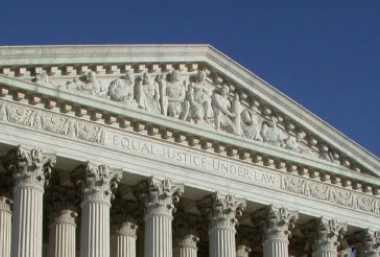The United States has amended its patent law, switching from a 'first-to-invent' system to a 'first-to-file' system. The new law, known as the America Invents Act, came into force on 16 March 2013.
Some of the most significant changes are discussed below.
Change to a first-to-file system
The switch from a first-to-invent system to a first-to-file system brings the US into line with the rest of the world. This change means that, all other things being equal, the first to file an application will get a patent, not the first to invent the technology. This change is a significant shift for organisations focused on the US market and familiar with the current US system, but is less of a change for organisations also focused outside the US where a first-to-file system has been in place for many years. As always, the need to establish a valid priority date as early as possible must be balanced against other business factors.
Changes with implications for portfolio management
Among the many changes, several with practical implications for managing a patent portfolio include the following.
1. Grace Period
The broad 12-month grace period that allowed an applicant to file after an earlier disclosure has been narrowed and now relates only to disclosures made by the inventors or obtained from the inventors of a later-filed application. A subsequent publication by another may still be citable as prior art during examination.
This change means that it may no longer be possible to file in the United States after publication has occurred with the expectation of seeking broad patent protection. However, this change brings the US grace period closer to that of other countries, such as Australia and Canada.
2. Prior Use
Prior use of the invention outside of the United States, such as public use or commercial use, is now relevant to patentability. This prior use must also be disclosed to the USPTO, in line with the applicant's other disclosure obligations.
This change also aligns the US with the rest of the world where prior use of an invention in any country was generally relevant to the patentability of that invention in any other country. However, unlike other countries, such use must be disclosed to the USPTO.
3. Documents citable as prior art
Non-English-language international (PCT) applications that were filed but not published at the time a later application was filed are now citable against that later application by US examiners. Also, PCT applications in any language that were filed but not published at the time a later application was filed are now citable against that later application as of the foreign priority date of the PCT application, rather than its international or US filing date.
These changes may make it more difficult to obtain patent protection if such PCT prior art exists for a particular technology. Unfortunately, such prior art cannot be located by pre-filing prior art searching so updated prior art searching before filing US applications is necessary to identify any risk.
4. US provisional applications
The need to file a US provisional application to ensure the application acts as prior art against later US applications has been removed. A New Zealand provisional application is now just as effective as a US provisional application at obtaining US patent protection. This change will simplify initial filing decisions.
5. Challenging granted patents
The options for challenging granted US patents have been broadened. For users of the international patent system that are familiar with Australian, European or New Zealand opposition processes and their impact on downstream litigation, the fees and rules surrounding these options do not necessarily make the new options any more accessible to foreign users of the US patent system than the previous options. The need for careful consideration of the options available remains.
Assignees can file
Although the original inventors must still sign forms, patent applications can now be filed in the name of an assignee - typically a company.
Conclusion
The changes to US patent law made by the America Invents Act aim to improve patent quality, to align US law with that of other countries and to make aspects of the US patent system more effective for all its users. The changes do significantly alter US-specific tactics for filing and prosecution of applications and post-grant proceedings and should be considered in detail as part of developing and maintaining any patent portfolio that includes the US.
